Artist Interviews 2023
Liz Foulks 
By Johnny Otto
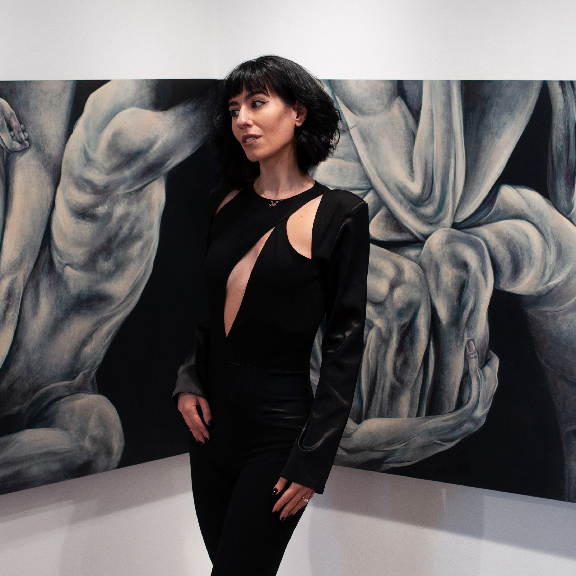
Corporeal Landscape II was your recent show at the Buster Levi Gallery in NYC. Corporeal meaning of the body as opposed to the soul. Is all of your work focused on the human form and why are you drawn to that as a subject?
I’ve explored quite a few different styles and subjects throughout my life as an artist, and continue to do so, but I always find myself pulled back to recreating bodily forms. There is something so personal about painting a hand, or a leg, or a knee. They seem insignificant when you look at them on your own body, but when you take them out of their natural context and place them on a painted wood panel, there is so much more to discover. You can determine where you want to place these corporeal “anchor points,” as I call them, and what you want to surround them with. Other bodily forms? Abstract structures? These mini universes are all within your power to reimagine, and I find that part of it invigorating.

How did you get started painting and what or who inspired your journey?
For as long as I can remember, I’ve been creating art. It started off by inventing characters in my head and drawing them on paper; each character had a story and I was heavily inspired by manga and anime drawing styles. I realized at a very early age that being an artist would always be a key part of my identity. I continued to draw on my own time, but also took art classes in middle school, high school, and eventually college. It was at university, as a Visual Arts major, that I established this connection to drawing bodily forms; especially from classical sculpture references and other images I’d find on Tumblr.
This curiosity was mostly sparked by an interest in anatomy, and I continued to practice until I had my first NYC exhibit in 2016, titled Corporeal Landscape. Up until that show, I just created literal bodily forms based on sculptural references; nothing too complex nor revolutionary. The works that led up to the exhibit marked a monumental shift in my artistic voice, as I started introducing abstraction within the bodily forms. Different body parts melted into one another to create an immersive, disorienting experience. The entire artwork was created with charcoal on paper, 20 separate pieces of paper that aligned with each other to create a 20 foot long piece. My most recent show, Corporeal Landscape II, was an opportunity for me to revisit this concept and elevate it further through paint (my latest favorite medium), wood panels instead of paper, and moments of color within a mainly black & white world.
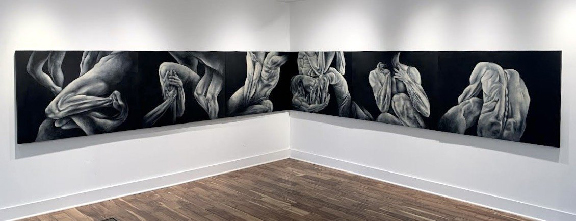
Any special techniques or methods you like to share?
During the process of creating the paintings for Corporeal Landscape II, I found a swift workflow and problem solving system. Each wood panel is coated in a few layers of black gesso before I begin creating the human forms; I always start from a dark surface and build up the highlights from there. I don’t sketch any of my work; I always dive right in with strokes of gray gesso, which I think adds to the fluidity of the human forms overall.
I’ve found the best and quickest process for me is to start off with a realistic body part (like a hand or an arm) and then surround it with more abstract forms that make sense to the composition as a whole. After all of the forms are complete, I incorporate touches of alizarin crimson & phthalo blue into the shadows and warm beige into the highlights; these are either added in by stippling a dry brush or a wet glaze. Afterwards, I add a glaze of phthalo blue into the black background to give it a richer tone.
Using black and gray gesso as my main mediums work really fluidly together and create a creamy, soft mixture that helps me quickly derive shadows & highlights. They also mix well with acrylic paint and unveil an almost oil-like quality & texture.
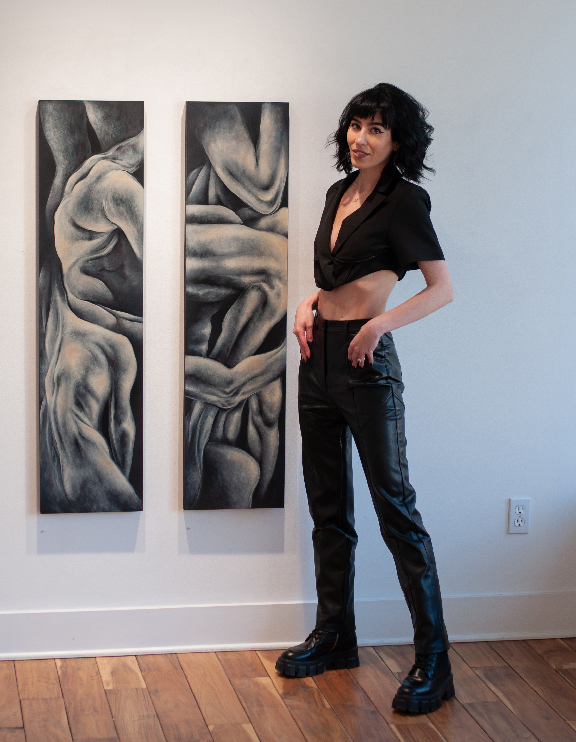
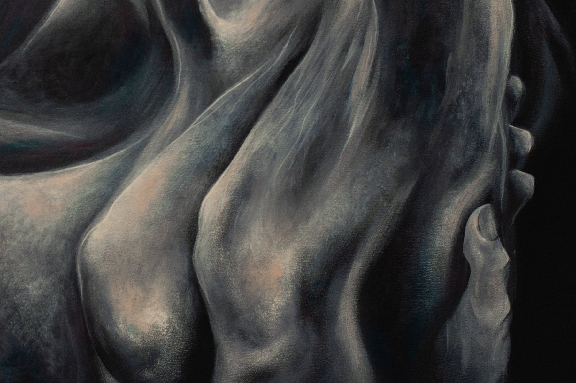
You went to a Private Catholic University, Fordham. How did that inspire your work?
Going to a private Catholic university taught me quite a few things, and was ultimately the catalyst of me discovering myself, which ironically didn’t happen until many years after college. I placed a lot of rules on myself growing up. Most of those restrictions were related to religious and societal expectations of women - particularly about bodily autonomy. My work in Corporeal Landscape attempts to tackle and dismantle those rules set upon me by both myself and society as a whole; this is something I’ve been observing with a close lens fairly recently, over the past few years. The art teeters on the edge of disorientation of identity and relationship to oneself, and it’s something I’ve been learning to combat in my personal life, which has entailed a raw mix of pain and enlightenment. This is what the Corporeal Landscape concept has meant to me recently, and it’s an incredibly personal journey. I purposefully haven’t brought this to the table when explaining what the artwork means to me, because I think it’s important for viewers to create their own feelings and projections based on the art, instead of me leading them to a specific idea. A lot of people have told me what the work means to them, and that is what’s most important to me.
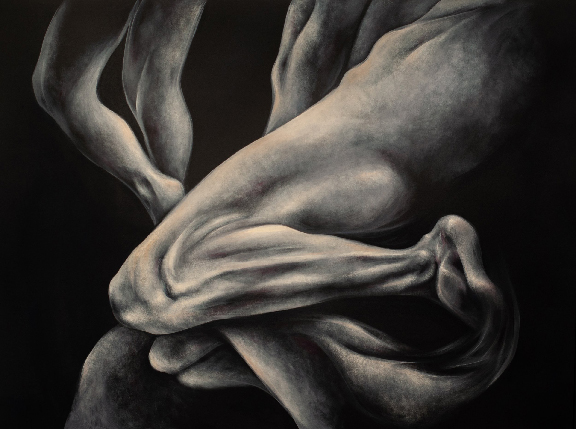
Does music or other art forms inspire your work?
I listen to a lot of bass-heavy, electronically dark tracks while I paint, which I think brings that slight macabre edge to the work. The more intense, the better! It pushes me to create dynamic movement in my work. Some personal favorite records within this genre are I Disagree by Poppy, haha i like it by LUN, and TURN OFF THE LIGHT by Kim Petras.
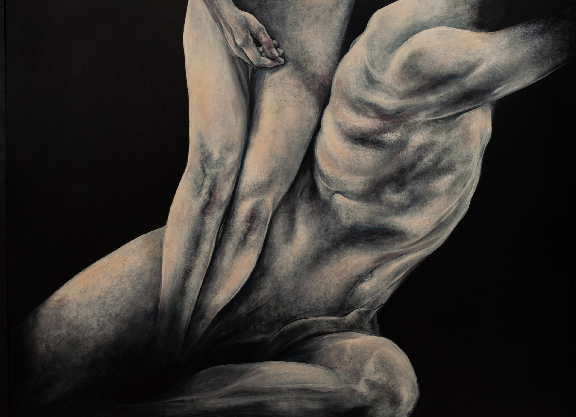
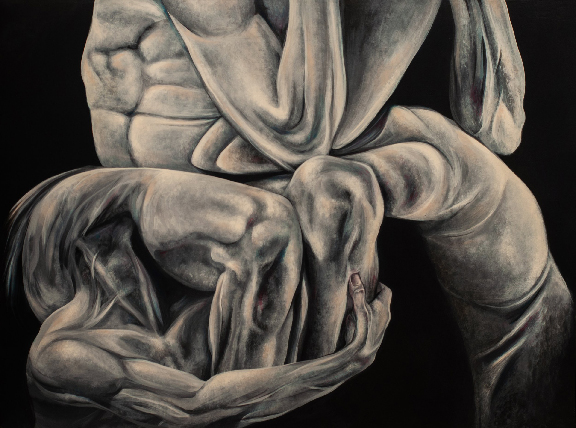
What do you do if you are lacking inspiration to help you get back on track?
When I find myself in a creative rut, the best thing for me to do is to just sit down and paint. Pushing through the lull works wonders in my experience. I actually went through a period of not painting/creating much art for almost 3 years; my excuse for this was always “I’m too busy” - which was true in certain ways, as I have a full time job. It wasn’t until the big 2020 hit that I encouraged myself to create artwork again. I gave myself a very simple task of painting a portrait of my cat. Once I completed that project, it unlocked a drive in me to make this my thing again, no matter what. In a way, I can owe it to my cat for pushing me to get here. I’ve been painting regularly ever since.

What is coming up for you?
I actually have an upcoming solo exhibit from May 1 - May 14th at Local Project Art Space in NYC. It’s called Corporeal Landscape: Remix Edition and will present the work in a novel way. The cool thing about the 6 large panels is that they can be rearranged in different ways to completely transform the atmosphere of the show. The space at Local Project is more narrow/long versus Buster Levi’s square space, so I think this is an opportunity to curate the show in a fresh lens. Maybe the 6 panels will be split up in pairs of 3; old and new works may make an appearance as well! My main goal within the next few years is to further explore the Corporeal Landscape project and present it to new audiences. I think this is just the beginning of my journey with the subject and I’m excited for new adventures and what’s to come.
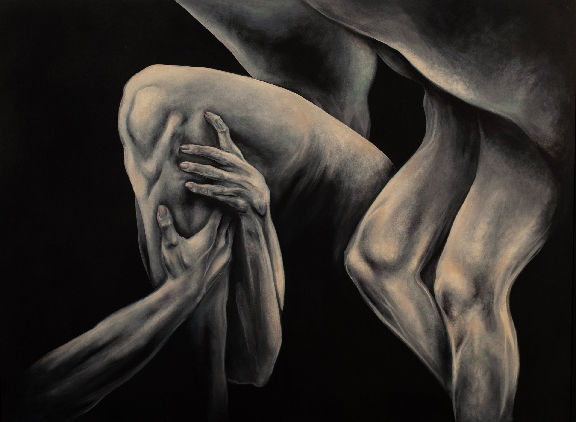
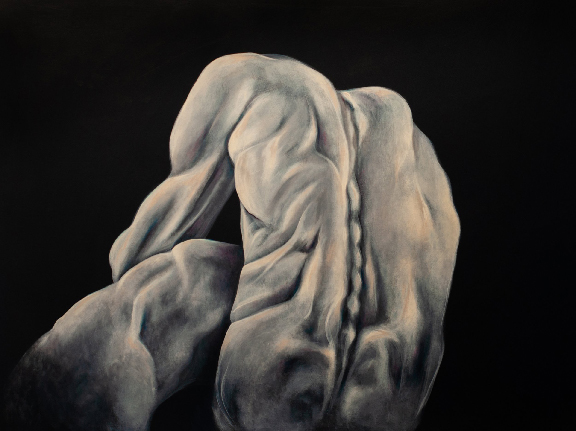
Are there any subjects that you are afraid to tackle but feel would be a good way to stretch your boundaries?
I’d love to add more self portrait moments to my work - this is something I’ve been wary of given the personal element of it, but I think it’ll only further amplify what this project means to me and may even improve the work. In Corporeal Landscape II, I added in a last minute painting that included a reference of my own neck/décolletage, and maybe I can explore those easter eggs further in the future.

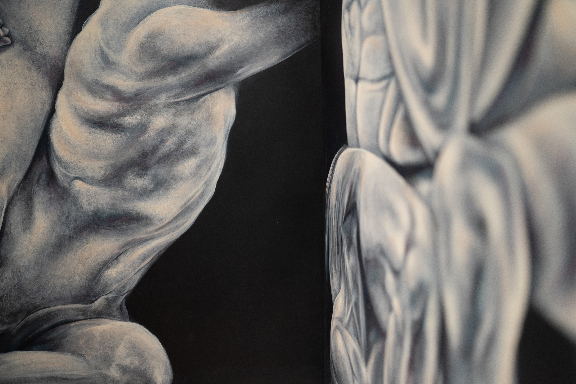
|
|

